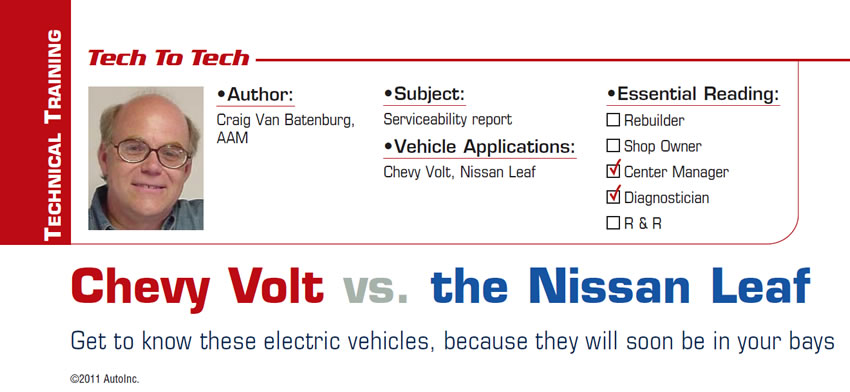July 2011 Issue
What’s Inside
Honda BMXA/SLXA: P0740 – lockup control-system fault
Volkswagen 09G/Mini TF60-SN: harsh double upshift 2-3
Volkswagen New Beetle: failsafe DTC 01045 stored
Audi/Volkswagen 01M/01N/01P: Assembly of K1 clutch
Audi 01J: Engagement issues
Audi 01J CVT: Adaptation
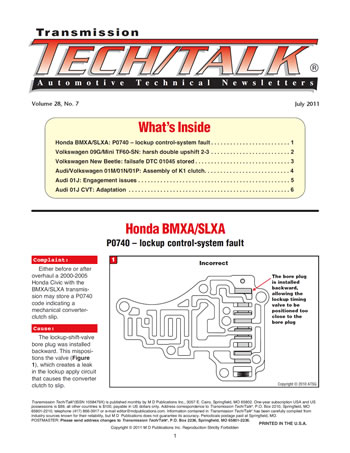
Cooler Bypass
External cooler bypass valves are becoming more and more popular, it seems. There are also many different variations of these bypass valves. It’s important that you check the cooler lines and cooler closely to see whether the vehicle you’re working on has one of these bypass valves. In most instances they can be removed and cleaned.
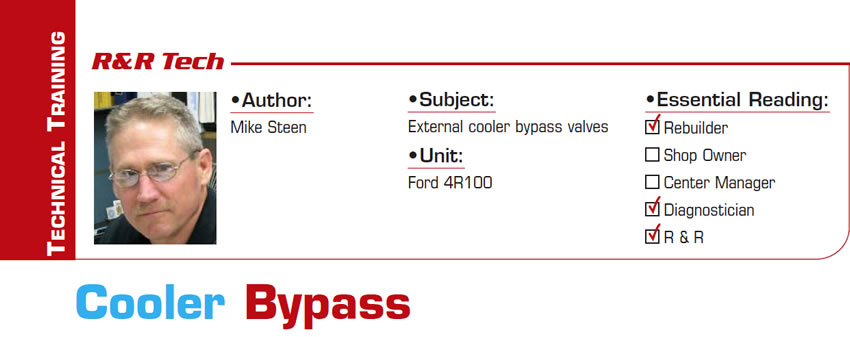
Is It Time for a Checkup from the Neck Up?
Many of the shop owners I’ve interviewed lately have indicated that they’ve had a tough time coping with all that’s taken place over the past couple of years in their businesses and the economy in general. Many remember the days of “easy business” when you could rely on doing certain basic functions like advertising, marketing and selling the same way over and over again because they always yielded a good result.

Electrostatic Discharge: the Quiet Computer Killer
Electrostatic discharge (ESD) is defined as a sudden and momentary flow of electric current between two objects of different electrical potentials.
At one time or another, everyone has walked across a rug and reached out for a door and gotten a little shock. This was an electrostatic discharge. There are many ways to generate electricity in our bodies; just a few examples are removing a coat or sweater, walking across a room, sliding across a car seat, or handling plastics or plastic foam. Depending on the humidity of the day, you may feel a shock from the electrostatic discharge.
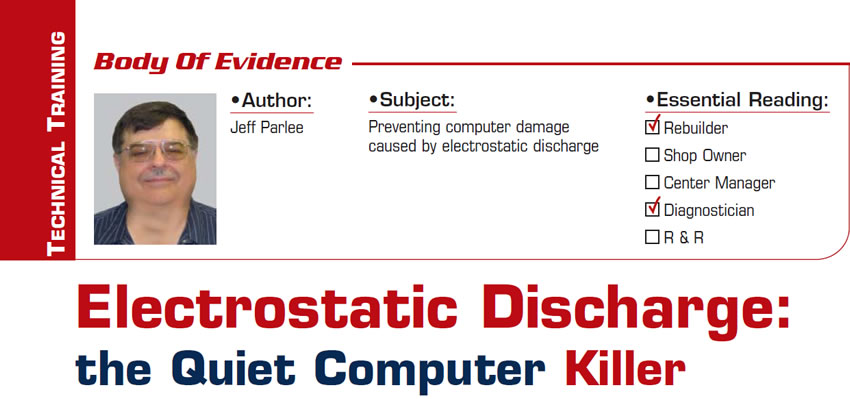
New Converters: Visually Inspect, Measure, Document
Every torque-converter shop should have a system to visually inspect, measure and document a converter when it is seeing the converter for the first time.
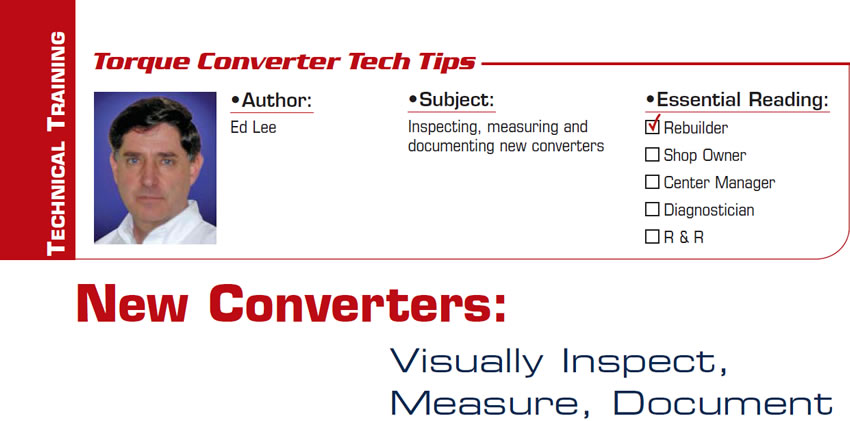
The Problem Is not in the Transfer Case
The most critical part of any repair work is locating the cause of the problem that causes the customer complaint. Be careful in this day of extreme economic pressure not to be too quick to remove a unit, especially a transfer case, before being positive that it is the source of the problem. We all need more work, and it is much too easy to remove the transfer case from the vehicle without inspecting all the other components that could be the source of the problem, such as driveshafts, yokes, differentials and driver bad habits.
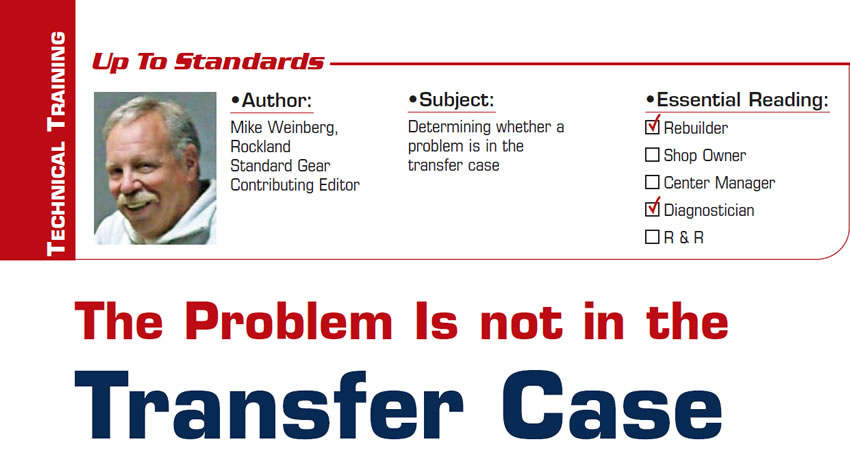
AS68RC Pressure-Switch and Performance Codes
When an Allison 1000/2000 transmission produces a pressure-switch code, it does not necessarily mean the pressure switch is faulty. A solenoid needs to stroke a valve, which then sends oil pressure to the switch to close it. If the solenoid is performing poorly, or the valve is sticking, the pressure switch will not close, causing the associated code to set.
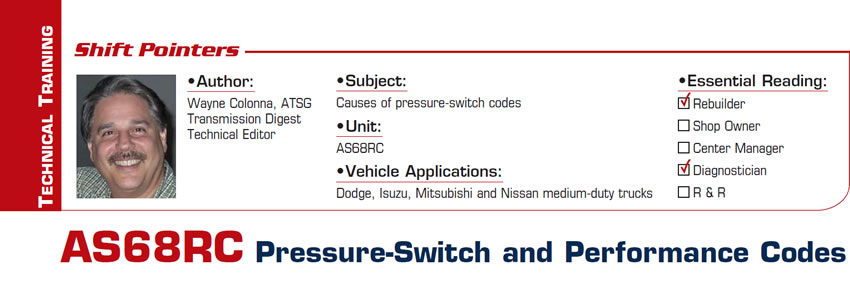
Troubled Continental Running ‘Rich’
The complaint on the car was that it ran terribly rich and the fuel mileage had gone down to about 8 mpg. The car had been to two independent shops and, last, at the Ford dealer. It had had both O2 sensors replaced and two electronic control units (ECUs) installed. The dealer told the owner that the car was getting as good a gas mileage as it was going to get. They had installed a new ECU because they said the one that was in it was an aftermarket part and wouldn’t work properly. The car was not setting any codes, but the sooty exhaust made it obvious that it was running pig rich. A scan check revealed that the engine was reaching operating temperature, the manifold-air-pressure (MAP) sensor was working, the engine was in closed loop, and the O2 readings were showing lean. I got the image in Figure 1 by connecting one channel of my scope to one of the O2 sensors and the other channel to the injector signal at the ECU.

JF011-E/RE0F10A Revisited
The first point is to know that there are two different types of internal wiring harnesses among Dodge, Mitsubishi and Nissan vehicles. Mitsubishi and Nissan provide an internal ground for all their solenoids and the stepper motor (Figure 1); Dodge provides an external ground for three solenoids (Figure 2).
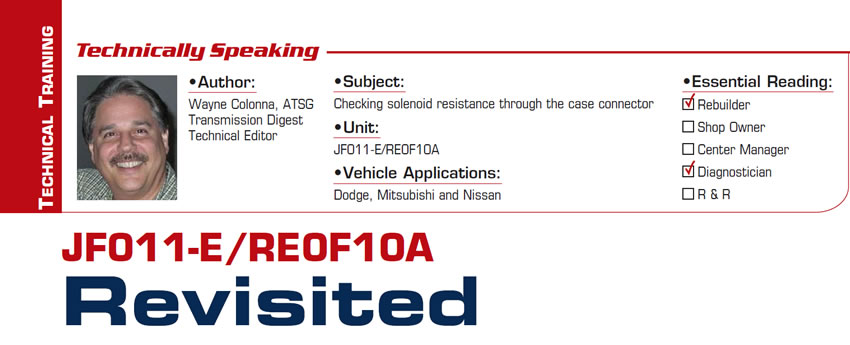
Volkswagen 09G or TF60: Clearing and Relearning Shift Adapts
Body of Evidence The 09G is an adaptive-learn transmission. The TCM can adapt the upshift and downshift pressures for each shift as well as initial engagement into drive and reverse. Whenever the transmission is rebuilt or the valve body is replaced the shift adapts should be cleared and the vehicle driven to relearn the new
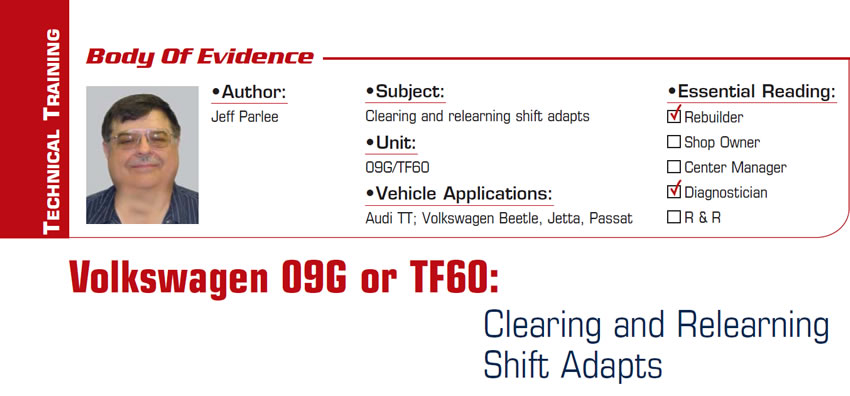
Keep Your Eye on the Ball
If you have had the opportunity to work on a 62TE transmission, you may have noticed nine checkballs in tapered pockets that are held into place with C clips (Figure 1). In our seminars we explained that these balls are used during an assembly-line check with a special tool that pressurizes their respective circuits. Once the tool is removed these balls become plugs. Apparently this procedure was more economical when compared with the cost of providing typical pressure taps. But what this means to you is that these balls must be checked to ensure that they are in their location and that they are sealing. Otherwise you could be fighting a variety of different complaints.
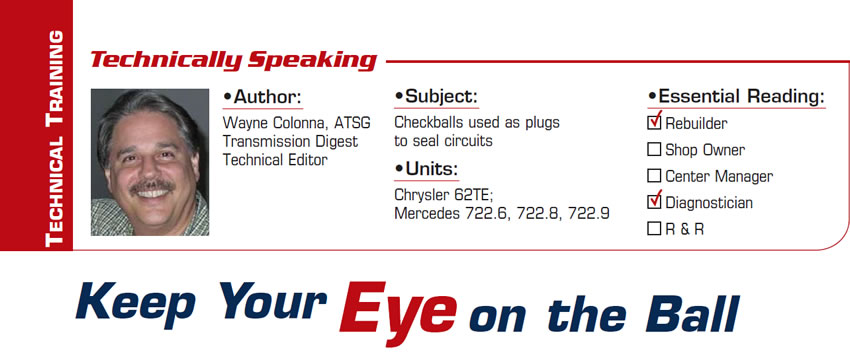
Chevy Volt vs. the Nissan Leaf
Frustration can be seen on every technician’s face from time to time. Will it ever end? Electric cars can give us the relief for which we have been waiting for more than 100 years. And it can start now.
The first two electric cars on the road today are the Nissan Leaf and Chevy Volt. The Leaf is pure electric (no gas tank), and the Volt is more of a plug-in hybrid. They are here, in the hands of a few early adopters. There is nothing to compare the old versus the new as we usually do, so we will compare them with each other.
